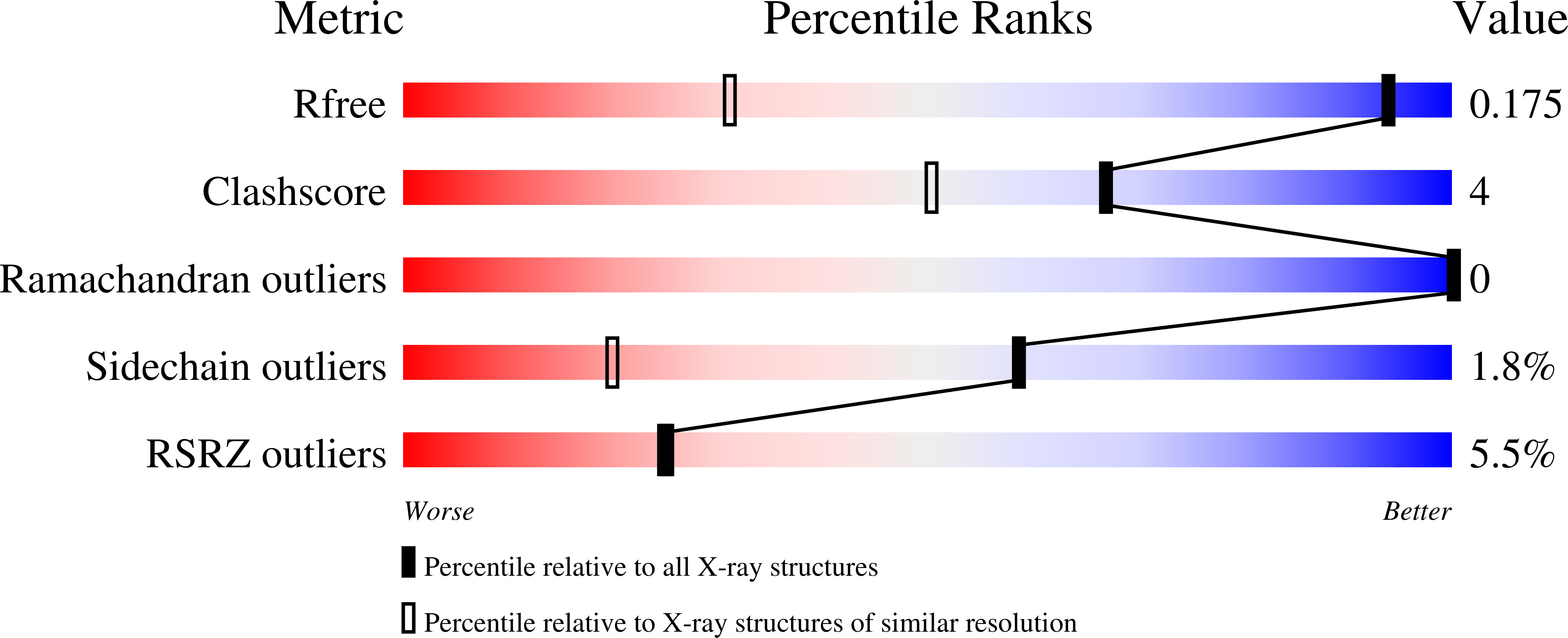Pas Domains.Common Structure and Common Flexibility
Vreede, J., Van Der Horst, M.A., Hellingwerf, K.J., Crielaard, W., Van Aalten, D.M.F.(2003) J Biol Chem 278: 18434
- PubMed: 12639952
- DOI: https://doi.org/10.1074/jbc.M301701200
- Primary Citation of Related Structures:
1ODV - PubMed Abstract:
PAS (PER-ARNT-SIM) domains are a family of sensor protein domains involved in signal transduction in a wide range of organisms. Recent structural studies have revealed that these domains contain a structurally conserved alpha/beta-fold, whereas almost no conservation is observed at the amino acid sequence level. The photoactive yellow protein, a bacterial light sensor, has been proposed as the PAS structural prototype yet contains an N-terminal helix-turn-helix motif not found in other PAS domains. Here we describe the atomic resolution structure of a photoactive yellow protein deletion mutant lacking this motif, revealing that the PAS domain is indeed able to fold independently and is not affected by the removal of these residues. Computer simulations of currently known PAS domain structures reveal that these domains are not only structurally conserved but are also similar in their conformational flexibilities. The observed motions point to a possible common mechanism for communicating ligand binding/activation to downstream transducer proteins.
Organizational Affiliation:
Department of Microbiology, Swammerdam Institute for Life Sciences, University of Amsterdam, 1018WV, Amsterdam, The Netherlands.















